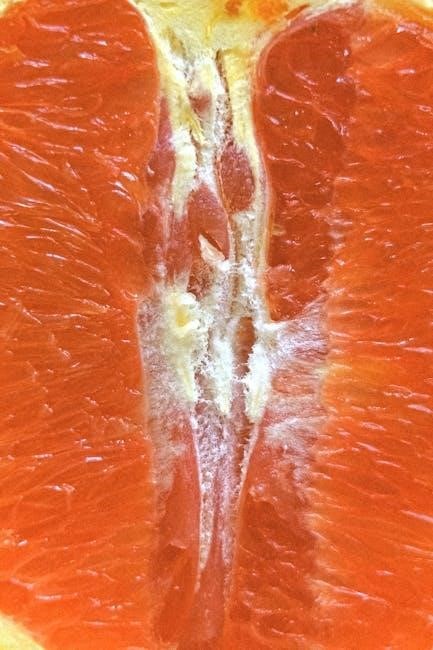nutrient dense foods chart pdf

to categorize foods by nutritional value, making it easier to plan meals and snacks, every day, always.
Understanding the Importance of Nutrient Dense Foods
Nutrient dense foods are essential for maintaining a healthy diet, and understanding their importance is crucial for making informed food choices. A nutrient dense foods chart pdf can provide valuable information on the nutritional value of various foods, helping individuals to plan their meals and snacks accordingly. By focusing on whole, unprocessed foods, individuals can ensure they are getting the necessary nutrients for optimal health. The internet provides a wealth of information on nutrient dense foods, including lists of foods that are high in essential vitamins and minerals. Using this information, individuals can create a personalized nutrient dense foods chart to guide their food choices. With a little knowledge and planning, it is possible to make healthy, nutrient-dense food choices that can have a positive impact on overall health and wellbeing. A balanced diet that includes a variety of nutrient dense foods can help to support energy production, and support overall health.

Benefits of Consuming Nutrient Dense Foods
Consuming nutrient dense foods provides numerous health benefits, including improved energy levels, using links to credible sources, and overall wellbeing always, every day, with a nutrient dense foods chart pdf nearby.
Reducing the Risk of Chronic Diseases with Nutrient Dense Foods
Reducing the risk of chronic diseases can be achieved by consuming nutrient dense foods, as shown in a nutrient dense foods chart pdf, which provides a comprehensive list of foods rich in essential nutrients, including fruits, vegetables, whole grains, and lean proteins. A well-planned diet that incorporates these foods can help lower the risk of heart disease, type 2 diabetes, and certain types of cancer. The key is to focus on whole, unprocessed foods, rather than relying on supplements or processed foods. By using a nutrient dense foods chart pdf, individuals can make informed choices about their diet and reduce their risk of chronic diseases. A healthy diet, combined with regular physical activity, can have a significant impact on overall health and wellbeing, and can help reduce the risk of chronic diseases, as supported by numerous studies and research, including those published in reputable journals and websites, such as health websites and
- lists of healthy foods
.

Nutrient Dense Foods Chart and Its Uses
Nutrient dense foods chart pdf helps users plan meals and make informed food choices, using
- ordered lists
to categorize foods, every day, always, with essential information, online.
Creating a Personalized Nutrient Dense Foods Chart
Creating a personalized nutrient dense foods chart pdf involves considering individual dietary needs and preferences, using online resources and
- unordered lists
to categorize foods by nutritional value. This can be achieved by consulting with a healthcare professional or registered dietitian, who can help develop a tailored plan. The chart can be customized to include specific food groups, such as
- ordered lists
of fruits, vegetables, whole grains, and lean protein sources. Additionally, the chart can be organized by meal type, such as breakfast, lunch, and dinner, or by snack options. By creating a personalized nutrient dense foods chart, individuals can make informed food choices and develop healthy eating habits. The chart can also be used to track progress and make adjustments as needed, using
to monitor nutritional intake and identify areas for improvement. Overall, a personalized nutrient dense foods chart is a valuable tool for achieving optimal nutrition!

High Protein Foods and Their Role in a Nutrient Dense Diet
High protein foods like lean meats and fish are essential, using
- lists
to plan meals, ensuring optimal nutrition, always, every day, with a nutrient dense foods chart pdf, for healthy eating habits.
Plant-Based Foods and Their Nutrient Density
Plant-based foods are rich in nutrients, offering a range of health benefits when consumed as part of a balanced diet. Using a nutrient dense foods chart pdf can help individuals make informed choices about the foods they eat. A diet rich in plant-based foods can provide essential vitamins, minerals, and antioxidants, supporting overall health and well-being. Foods such as leafy greens, fruits, and whole grains are packed with nutrients, making them an excellent choice for those looking to improve their diet. By incorporating these foods into their meal plan, individuals can reduce their risk of chronic diseases and maintain optimal health. With the help of a nutrient dense foods chart pdf, planning meals and snacks becomes easier, allowing individuals to make the most of the nutritional benefits offered by plant-based foods. This can be achieved by using
- unordered lists
to categorize foods by their nutrient density, making it easier to create a balanced and healthy meal plan.

Using the ANDI Score to Evaluate Nutrient Dense Foods
The ANDI score is a valuable tool for evaluating the nutrient density of foods, providing a simple and effective way to compare the nutritional value of different foods. By using a nutrient dense foods chart pdf that includes ANDI scores, individuals can make informed choices about the foods they eat. The ANDI score rates foods based on their micronutrient content per calorie, with higher scores indicating a higher nutrient density. Foods such as green leafy vegetables, including mustard greens, kale, and Swiss chard, receive high ANDI scores due to their rich nutrient content. Using the ANDI score to evaluate foods can help individuals create a balanced and healthy meal plan, supporting overall health and well-being. With the help of a nutrient dense foods chart pdf, individuals can easily compare the ANDI scores of different foods, making it easier to plan meals and snacks that provide the necessary nutrients for optimal health, using
to organize and compare the data. This information can be used to develop a personalized nutrition plan.